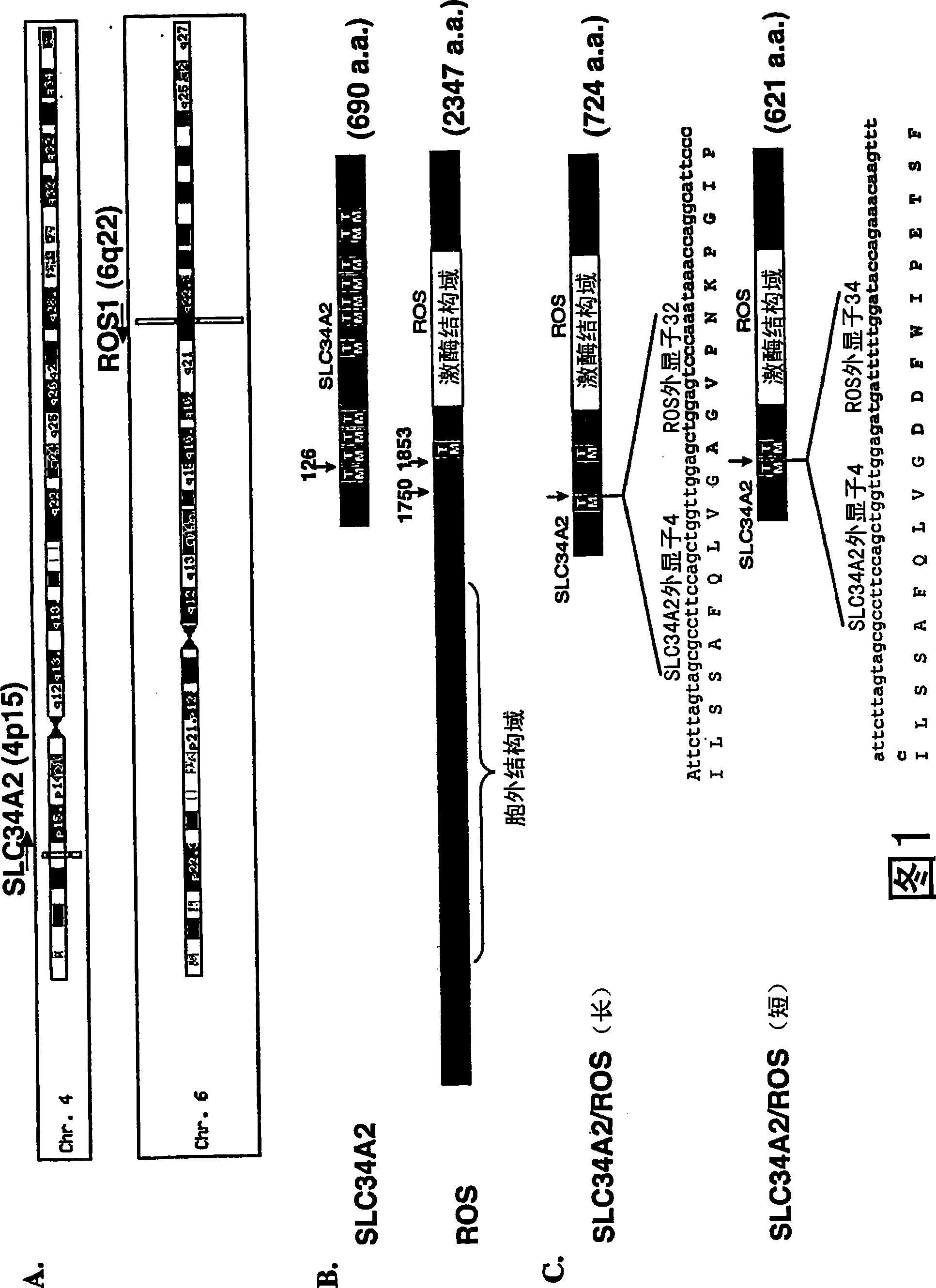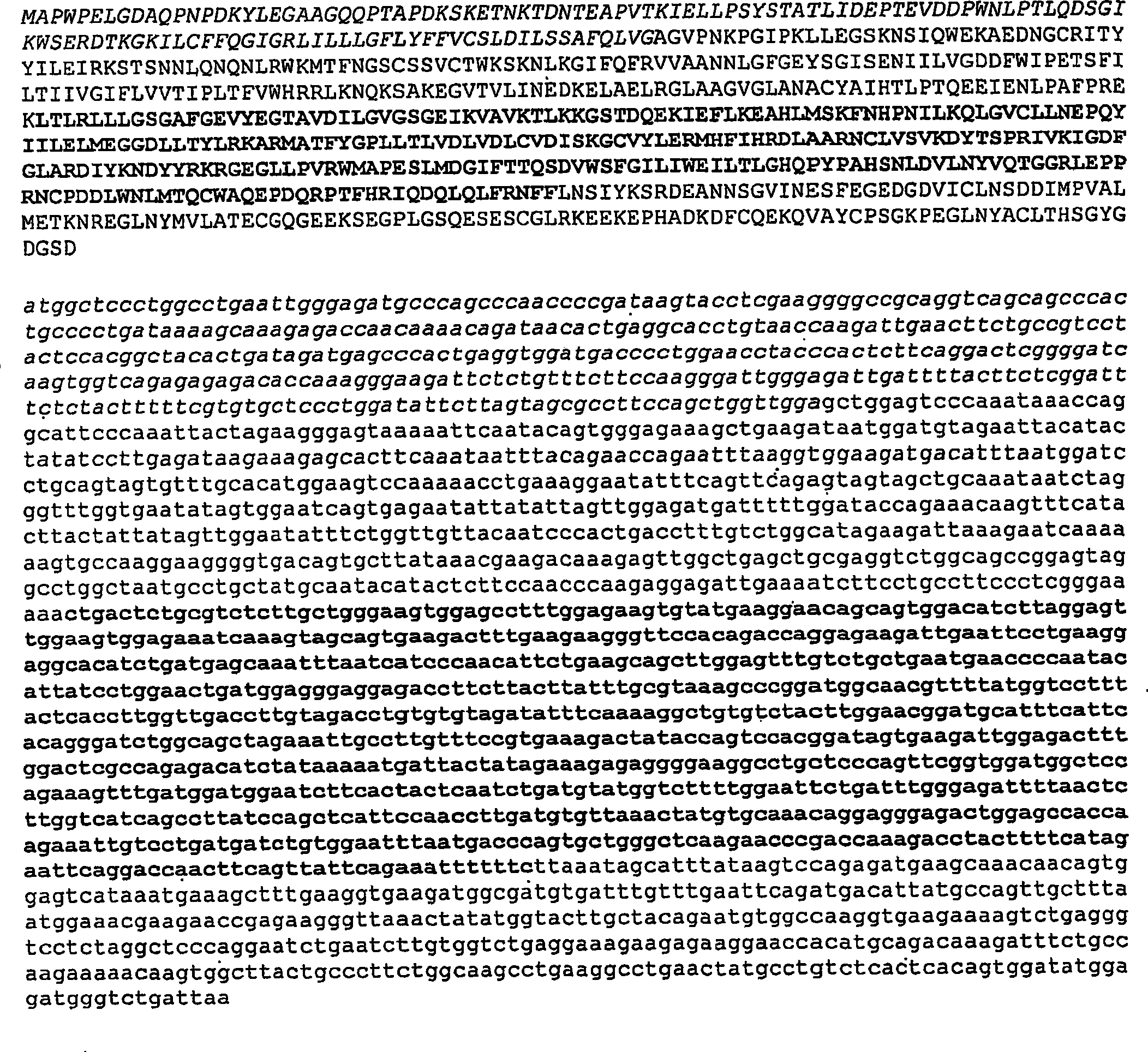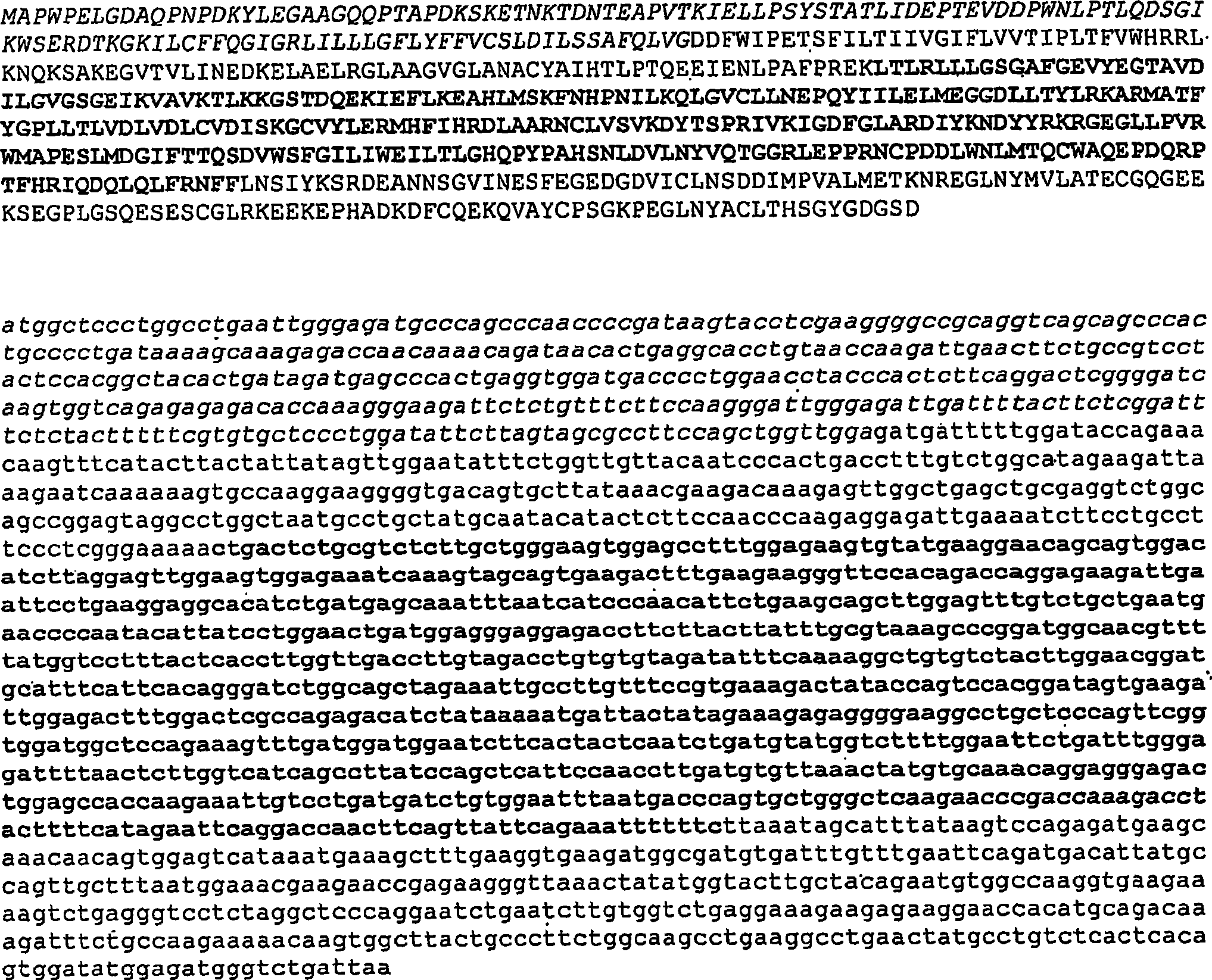Translocation and mutant ros kinase in human non-small cell lung carcinoma
A lung cancer, cancer technology, applied in the field of diagnosis and treatment, cancer detection
- Summary
- Abstract
- Description
- Claims
- Application Information
AI Technical Summary
Problems solved by technology
Method used
Image
Examples
preparation example Construction
[0240] The preparation of various targeting antibodies against receptor kinases and their use to inhibit the activity of the targeted receptors has been described. See, e.g., U.S. Patent Publication No. 20040202655, "Antibodies to IGF-I Receptor for the Treatment of Cancers," Morton et al., Oct. 14, 2004; U.S. Patent Publication No. 20040086503, "Human anti-Epidermal Growth Factor Receptor Single-Chain Antibodies" , April 15, 2004, Raisch et al., US Patent Publication No. 20040033543, "Treatment of Renal Carcinoma Using Antibodies Against the EGFr", February 19, 2004, Schwab et al. Standard methods for making and using receptor tyrosine kinase activity inhibiting antibodies are well known in the art. See, eg, European Patent No. EP1423428, "Antibodies that Block Receptor Tyrosine Kinase Activation, Methods of Screening for and Uses Thereof" June 2, 2004, Borges et al.
[0241] Can also use phage display method to prepare ROS specific antibody inhibitor, the scheme of phage li...
Embodiment 1
[0288] Identification of ROS kinase activity in NSCLC cell lines by total phosphopeptide profiling
[0289] The total phosphorylation profile of kinase activation in several human NSCLC cell lines including HCC78 was detected using a recently described and efficient mass spectrometric characterization technique for the isolation and modification of peptides from complex mixtures ("IAP" technique, see Rush et al., supra). . The IAP technique was performed using a phosphotyrosine-specific antibody (CELLSIGNALING TECHNOLOGY, INC., Beverly, MA, 2003 / 04 Cat. #9411) to isolate and subsequently identify phosphotyrosine-containing peptides from extracts of NSCLC cell lines.
[0290] In particular, the use of the IAP approach facilitates the identification of activated tyrosine kinases in NSCLC cell lines to identify novel drivers in this disease.
[0291] cell culture
[0292] HCC78 cells obtained from DSMZ (German National Resource Center for Biological Material) were grown in RP...
Embodiment 2
[0308] Analysis of ROS Kinase Expression in NSCLC Cell Lines by Western Blot
[0309] The observation that the HCC78 NSCLC cell line, but not other NSCLC cell lines, expressed activated ROS kinases was confirmed by Western blot analysis of cell extracts using antibodies specific for ROS and other receptor tyrosine kinases (RTKs) as well as downstream kinases.
[0310] Add Protease Arrest with TM (G. Biosciences) 1X Cell Lysis Buffer (CellSignaling Technology) lysed HCC78 cells and separated by electrophoresis. All antibodies and reagents used in western blotting were from Cell Signaling Technology, Inc. (Beverly, MA). Western blotting was performed as described in "Western Immunoblotting Protocol" (Cell Signaling Technology, Inc., 2005-2006 catalog). Anti-ROS antibody was obtained from Santa Cruz Biotechnology, Inc.
[0311] Figure 5 Indicates the Western blot results. Among various NSCLC cell lines, only HCC78 expressed ROS protein. The ROS protein in HCC78 has a much ...
PUM
 Login to View More
Login to View More Abstract
Description
Claims
Application Information
 Login to View More
Login to View More - R&D
- Intellectual Property
- Life Sciences
- Materials
- Tech Scout
- Unparalleled Data Quality
- Higher Quality Content
- 60% Fewer Hallucinations
Browse by: Latest US Patents, China's latest patents, Technical Efficacy Thesaurus, Application Domain, Technology Topic, Popular Technical Reports.
© 2025 PatSnap. All rights reserved.Legal|Privacy policy|Modern Slavery Act Transparency Statement|Sitemap|About US| Contact US: help@patsnap.com



